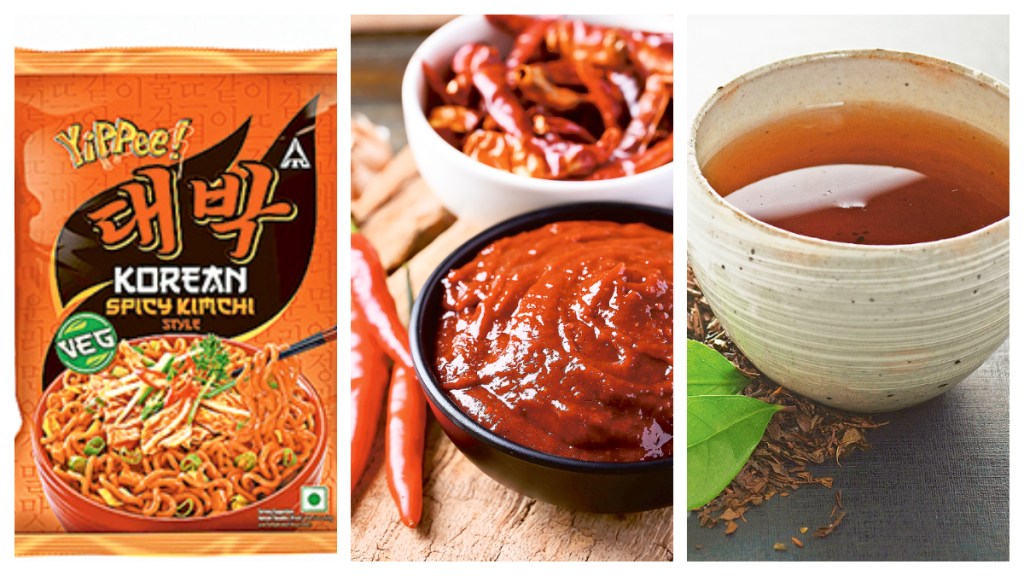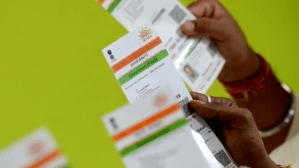Whether it’s lattes, cocktails, cookies or cup-cakes, matcha is going everywhere, and the market can’t get enough. But just when the finely ground powder of green tea from Japan seemed to have claimed peak flavour status, hojicha, too, entered the conversation. Described as matcha’s roasted kin, hojicha took the same green tea leaf, gave it a smoky depth, and offered a flavour profile that felt more grounded, even more ‘coffee-like’ in many ways. It is being introduced not as an alternative to chai or coffee, but as a warm and cold earthy indulgence.
Matcha and hojicha have stormed into menus, dominated dessert counters, and lent themselves to everything from creamy lattes to savoury marinades.
But as this coffee-meets-tea crossover is getting started in the rapidly globalising food and beverage landscape, the demand for such novel flavours is not only trending but also driving a multi-dimensional taste experience, especially among the younger demographic. This explains why matcha offered in Starbucks’ lattes in the UK or Krispy Kreme doughnuts in Singapore has seen a surging demand, so much so that it has resulted in a global supply problem.
Mintel reports a growing appetite for global flavour exploration, particularly among younger Indian consumers in metros. When choosing a premium (slightly expensive) snack, 24% of Indians consider flavour inspired by international cuisine; 34% of instant noodles/ soup/ pasta consumers are willing to pay more for desi-Asian flavours. Consumers often experiment with these global flavours in familiar form but a novel spin on the familiar is what resonates with Indian consumers.
“We are seeing an interest in Korean and Japanese flavours, which is rooted in familiarity. Though still niche, it is significant given the traditional nature of the category,” says Rushikesh Aravkar, director, India Reports, Mintel.
Curiosity about Japanese food is also growing in India. “We are seeing izakayas and ramen bars mushrooming in India as Indians increasingly embrace the cuisine. Younger and urban consumers are now warming up to more nuanced flavours, thanks to the exposure to Japanese cuisine through restaurants, travel and pop culture,” adds Aravkar.
Cultural storytelling
At a time when Indian consumers, especially Gen Z and millennials, are craving more than just calories from their food, flavourful storytelling is emerging as a serious business tool.
For Dilip Krishnan, co-founder & CEO, India, of Foodsta Kitchens, which owns and operates Nasi and Mee, a Southeast Asian cuisine restaurant with outlets in Bengaluru, Chennai and Kochi, Korean gochujang or Japanese matcha are cultural storytellers. Krishnan has embraced flavours not only for novelty but also for their depth, versatility, and emotional connection with today’s diners.
“Take our Korean-style chicken ramen, for instance. It’s bold, comforting and flavourful, and it’s become one of our most-loved bowls. Matcha, on the other hand, has found expression across formats—from our breakfast favourite matcha French toast to the refreshing matcha latte, matcha coconut panna cotta, and the crowd-favourite matcha & salted caramel bubble tea,” says Krishnan.
From a business lens, these flavours have been instrumental in driving both brand love and revenue. “They allow us to play with seasonality, exclusivity, and storytelling, all of which are critical in today’s F&B landscape,” says Krishnan. Nasi and Mee is all set to expand its footprint in the south with new stores in Chennai, and Bengaluru, Hyderabad and Coimbatore.
Nutraceutical brand Be. has tied up with The Grammar Room cafe in Delhi for a menu of seven collagen-infused beverages to deliver clean nutrition while creating an emotional connect. “One of the beverage formulations features a premium Japanese marine collagen to improve skin elasticity, texture, and hydration. We wanted to reimagine how wellness fits into everyday culture and offers more than a drinks menu,” adds Angela Toppo, CMO and co-founder of Be.
Market mapping
Needless to say, India’s ever-evolving snack market is also capitalising on these novel flavours. “We launched our Korean Chilli Cream Cheese keeping in mind the growing popularity of Korean and Japanese flavours. It signals a deeper shift in the Indian palate’s openness to bold, global profiles,” says Prateek Mittal, co-founder of Italian cheese brand Crèmeitalia.
FMCG giant LT Foods and Japan’s Kameda Seika, a rice innovation company, have jointly invested over Rs 60 crore to launch Kari Kari, a new snacking category focused on rice crackers. The new product, Krispy Hopu, is a vegan, gluten-free rice snack, crafted in the ‘spirit of Niigata’, which is Japan’s rice heartland.
“Flavour meets consumers emotionally. Today, the vegetarian population is enjoying more sushi than the non-vegetarians as they have actually replaced fish with carrots, which even the Japanese people would not have thought about,” says Amit Mehta, MD, Kameda LT Foods Joint Venture, and vice-president (food business), LT Foods. The brand captured India’s ‘clean label’ consumer base, where flavour is a carrier for health, heritage, and novelty, and introduced rice snacks. “Our rice cracker texture adapts global flavours and is acceptable to Indian consumers,” adds Mehta.
Brands like Lay’s, Bingo!, and YiPPee! have leaned into this trend with influencer campaigns, limited-edition packaging, and flavour launches tied to drama premieres and music trends.
“Driven by digital exposure and the popularity of K-pop and K-dramas, we don’t see Korean flavoured snacks as just a passing craze. These have the potential to become a major flavour bucket of the future,” says Saumya Rathor, marketing director, Lay’s India. The brand’s ‘Flavours of the World— Korean Chilli’ variant is a powerful driver of discovery. “Limited-time launches like Flavours of the World allow us to test bold formats, localise international cues, and create mass moments out of niche trends. With the right innovation and cultural context, Korean snacks can move from niche to mainstream,” adds Rathor.
Another key tool is pop culture association. Last year, Bingo!, the snack brand from ITC, collaborated with South Korean singer Aoora for a music-video-style launch of the Korean chips line. The song, Maeun Maeun (Spicy Spicy), doubled as an advertisement, reaching Indian Gen Z audiences already immersed in K-dramas and Korean music.
“Our approach has been to introduce Korean flavours in a way that feels exciting and familiar. We are focused on defining a multi-layered roadmap— expanding the Korean inspired experience to keep it fresh, and rooted with evolving Indian preferences,” says Kavita Chaturvedi, chief operating officer, snacks business, ITC Foods. Currently, the range includes chips in three different formats and noodles in two distinct flavours.








